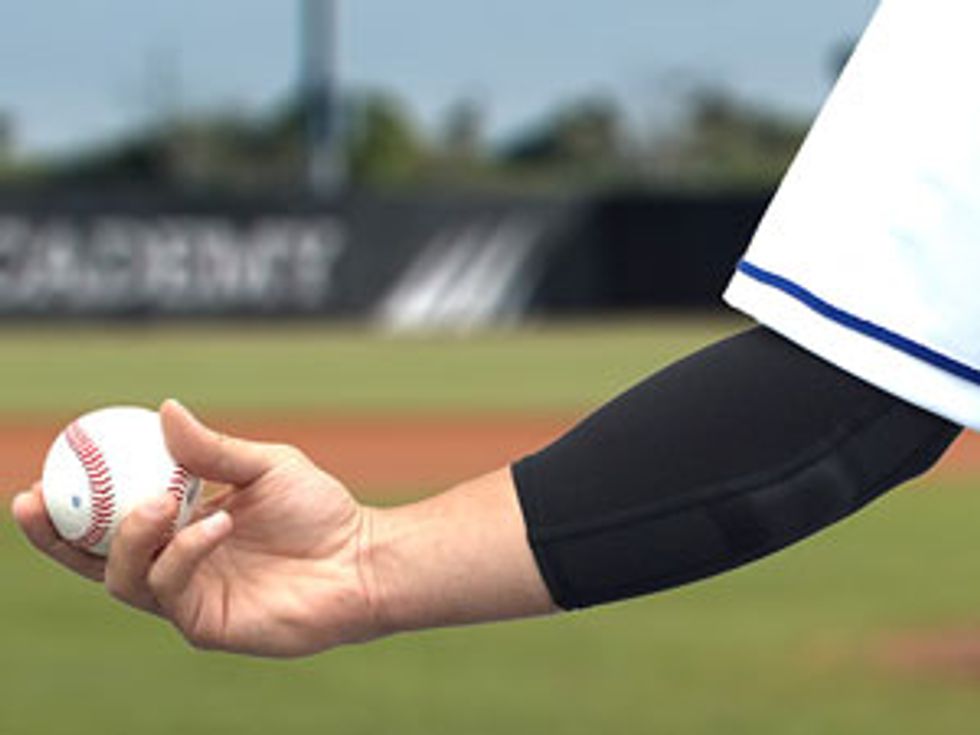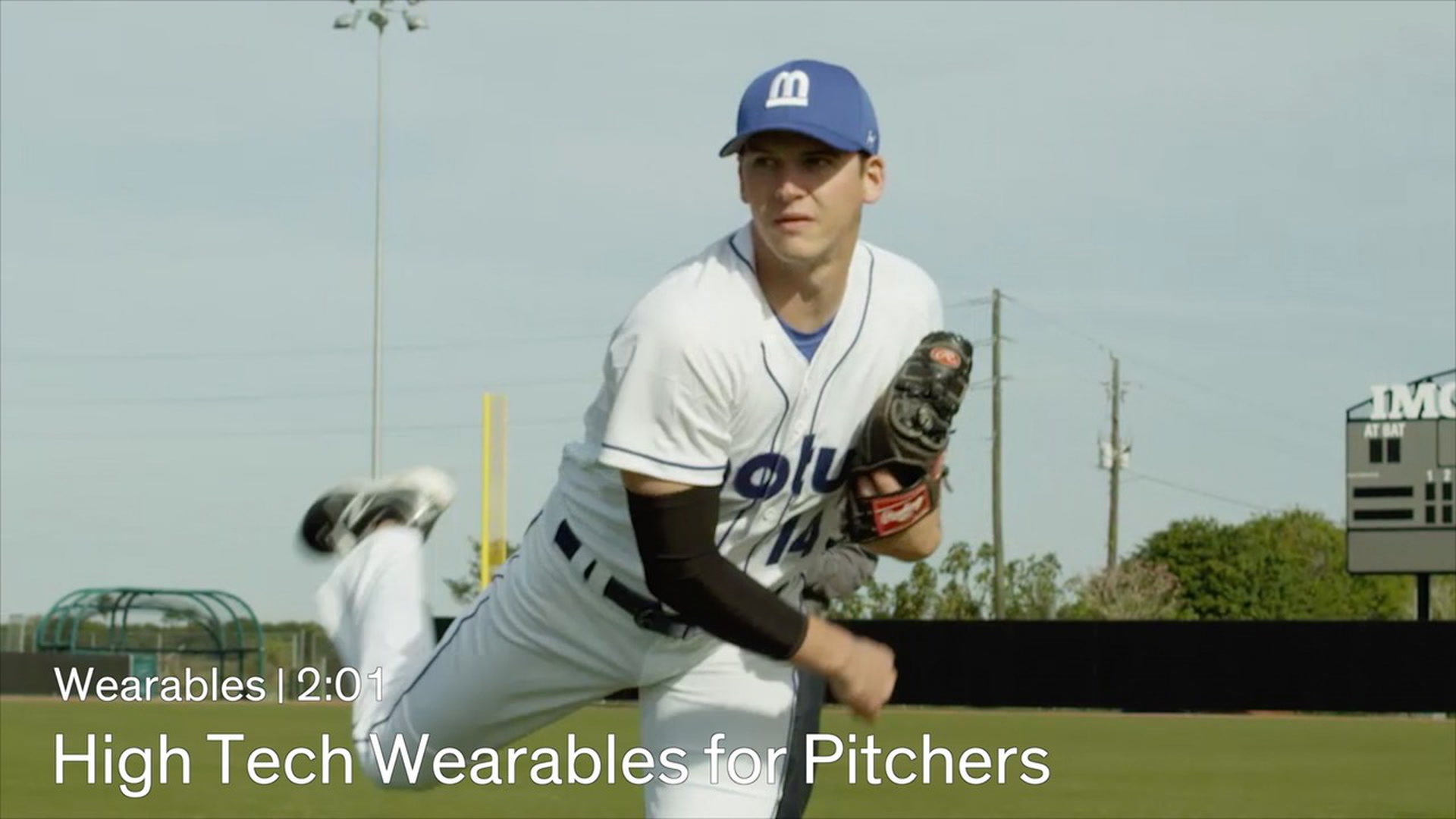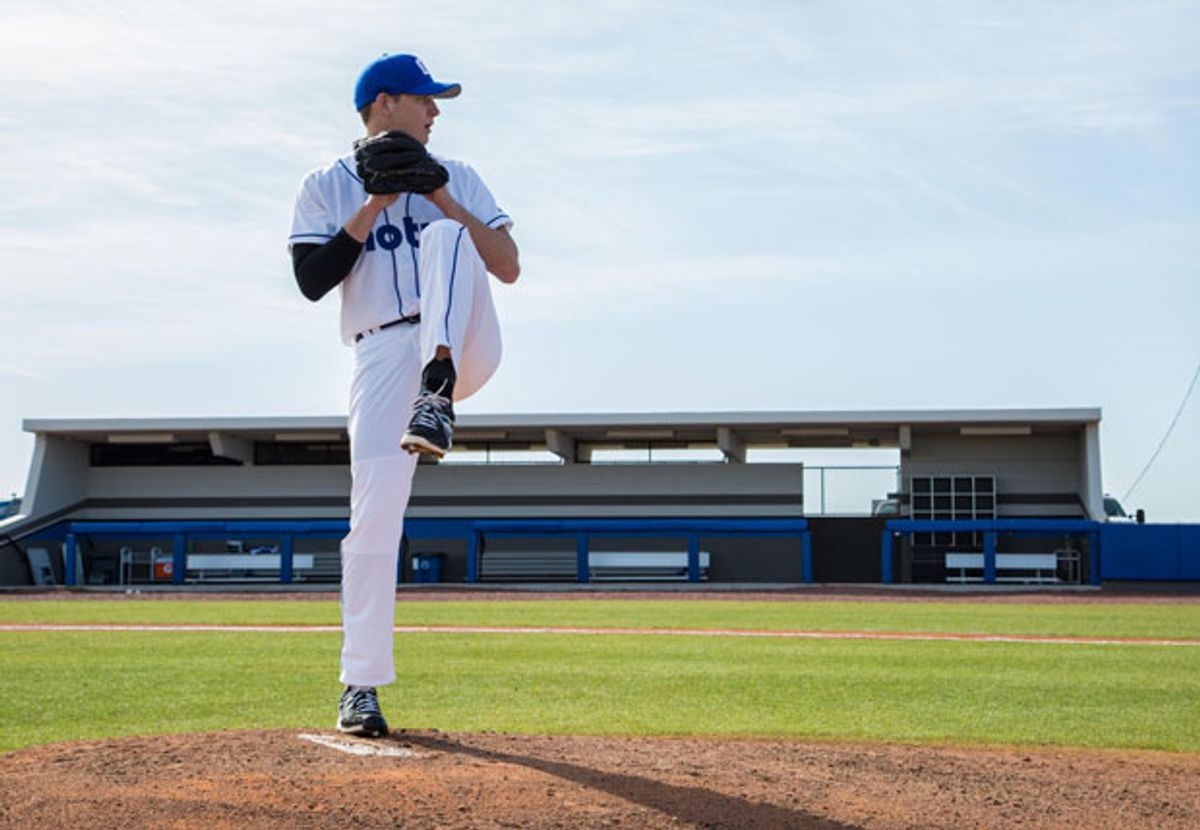
A wearable sensor that tracks strain on a pitcher’s elbow is making waves in major league baseball (MLB). This season, 27 MLB teams and their minor league affiliates are trying out the device, called the mThrow, in the hope that it will help monitor pitchers’ workloads, improve pitching mechanics, and prevent injuries. The device’s maker, Motus Global, in Massapequa, N.Y., plans to officially launch a consumer version this month. Teams seem to like it, but some players might have reservations about sharing their data.
Injuries to professional pitchers in the United States have become epidemic. The reconstructive procedures known as Tommy John surgeries, which repair the elbow’s ulnar collateral ligament (UCL), have increased among major league players from 14 performed in 2002 to 31 in 2014, according to the blog Baseball Heat Maps. Attempting to curb such injuries by arbitrarily limiting the number of throws or innings pitched hasn’t been effective, says Thomas Karakolis, an expert on the subject at the University of Waterloo in Ontario, Canada. “Baseball managers should be figuring out the forces on muscles, tendons, and ligaments for each individual player and guiding them based on that,” Karakolis says.The mThrow could be the key to that. But first, Motus must derive meaning from the data it is amassing. “I don’t think we quite have a grasp of all the information [the mThrow] is giving us, but I think it’s the beginning of something very big,” says Jamie Reed, senior director of medical operations for the Texas Rangers, whose major and minor league teams are using the device.
The mThrow consists of a compression sleeve with a small removable sensor worn in a pocket over the elbow. The sensor’s accelerometers and gyroscopes track arm movements, and the device wirelessly transmits the data to an app that calculates stress caused by torque on the UCL. The app also tracks a number of other metrics, such as pitch count, arm speed, release point, elbow height at release, maximum shoulder rotation, and “arm slot”—an indication of whether the throw was a side-arm pitch or over the top.

The app can gauge the amount of stress on a player’s elbow joint by comparing the condition to similar cases in the company’s database of pitcher workloads. The app can also compare stress levels created by, say, a fastball versus a curveball, and it can indicate when a pitcher’s arm slot might be changing due to fatigue. But giving context for that—identifying the trends in workload that lead to injury—is something the company is still working on. “It’s early now, but we’re seeing interesting things,” says Ben Hansen, chief technology officer at Motus. For example, the company is seeing a difference between players whose workloads increase and decrease smoothly and players with consistently high workloads or dramatic spikes and troughs, he says.
The mThrow offers much of the same biomechanics information that can be gleaned from motion-capture technology, mapping movements using multiple cameras that track markers placed on the body. Unlike motion capture, however, the mThrow sleeve goes anywhere the player goes. “Before, the only option was a motion-capture assessment once or twice per year. Now they get a smaller, more compact version every throw they make,” says Hansen.
The Texas Rangers bought 10 mThrows, keeping a couple and giving one to each of its minor league teams. Two of the organization’s players being tracked are recuperating from injury—an important use of the device, Reed says. “We are measuring their workloads so we don’t stress them too much in their return to health,” he says.
The Baltimore Orioles bought eight sleeves, all for the club’s farm teams, says Rick Peterson, a director of pitching development for the team. “My guess is it’s going to be a long time before the big league guys get into this, because they will not want to share this data,” he says. “Big league players are so protective of their space. Their first question is: ‘Can this be used against me?’ ”
That question is particularly pertinent for amateurs competing for a position through the league’s draft system and for players who are looking to get a new contract. Biomechanics analysis could work in a player’s favor if his mechanics are good. But if the data show red flags that could lead to a major injury, he won’t be as desirable. Peterson says he already uses video footage to look for mechanics problems in potential draft picks, and biometrics data from wearables would be a likely next step.
Reed agrees. “Once we’re comfortable with the Motus sleeve and the information it’s giving us, I could see us using it in predraft workouts where we could measure stresses and mechanics on players before they sign,” he says. “Certainly [we’d use it] after they sign to remold their mechanics.”
It’s a little harrowing to think that such data could cost a player his career for an injury that hasn’t yet occurred—or may never occur. “It’s an obvious concern, especially for guys in my shoes—minor league guys fighting for a chance to play in the big leagues,” says Dillon McNamara, a pitcher for the Charleston Riverdogs, a minor league team, who has experimented with the Motus sleeve. “The mThrow is pretty much looking right into your elbow and seeing how it feels as you’re pitching. That’s pretty personal,” he says. The players union, the MLB Players Association, did not provide comment to IEEE Spectrum.
The most useful application for mThrow may turn out to be for kids, and that’s the market Motus plans to target. “Many of us feel, myself included, that some of the root causes of injuries at the professional level start at the 12-, 13-, and 14-year-old level,” says Peterson.
“Kids are playing on multiple teams and playing year-round and trying to impress scouts all the time, so there’s never a break for them from throwing,” adds Bryan Bullington, a pitcher for the Orix Buffaloes in Japan’s Pacific League. It’s different as a professional, where players can have “a two- to four-month period in the off-season where they don’t even pick up a ball,” he says.
A wearable sensor like mThrow could address that concern by giving parents and coaches a cold, hard number indicating the stress on the child’s arm and the number of pitches. “It might give someone a more concrete feel for what the arm is going through,” says Bullington.
This article originally appeared in print as “A Wearable Turns Baseball Pitching Into a Science.”
